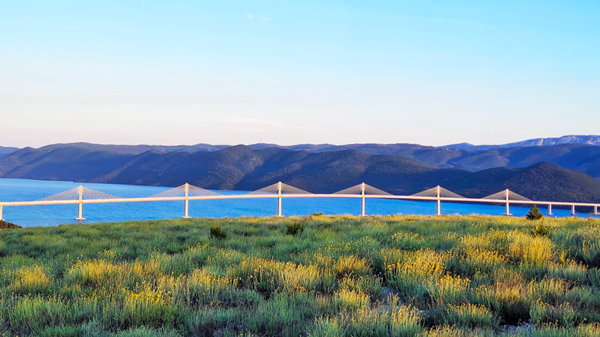A ceremony was held on July 26 in Komarna, Croatia, announcing opening of the Peljesac Bridge.
China Road and Bridge Corporation, a subsidiary of China Communications Construction Company Limited, was responsible for the project.

The Peljesac Bridge in Croatia opens to traffic on July 26. [Photo/sasac.gov.cn]
With a designed length of 3.94 kilometers, the project includes a 2.44-kilometer-long and 22.5-meter-wide bridge that spans Little Stone Bay in the Adriatic Sea and connects the two parts of the country's coastline for the first time.
It is the largest infrastructure in the country contracted by a Chinese enterprise and a demonstration project under cooperation of China, Croatia and the European Union.
The six-tower single-cable-plane cable-stayed bridge has four lanes and a designed speed of 80 kilometers per hour.

A view of the Peljesac Bridge under construction [Photo/sasac.gov.cn]
Covering 56,000 square kilometers, Croatia has a coastal line of 1,778 kilometers, making tourism industry a key part of its GDP at 30 percent. Operation of the bridge will make it easier for tourists to travel through all cities in the country, which is expected to boost its tourism industry.
During construction, the contractor enterprise obtained qualification to recruit local graduates and engaged more than 30 local senior engineers and talents in public relations and translation. What's more, the project also had cooperation with 17 professional institutes and provided over 1,500 jobs for local people, making it a platform to cultivate infrastructure talents.
It's worth noting that environmental protection has been a highlight during construction.
The Adriatic Sea is home to more than 26 kinds of fish and other creatures like dolphins, turtles as well as corals etc. As the ecological environment impacts local people's lives and the national economy, the Sea has been listed as a marine natural reserve by the EU.
To meet local environmental protection requirements, the contractor worked with local diving companies to guarantee a clean underwater construction site. It also developed a special device to lower noise during construction.
(Executive editor: Li Zhiyong)